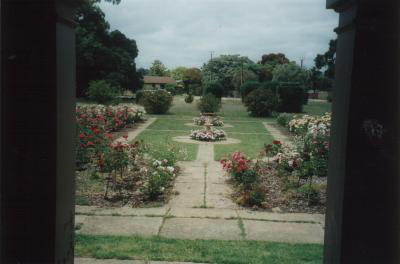
view from front hall
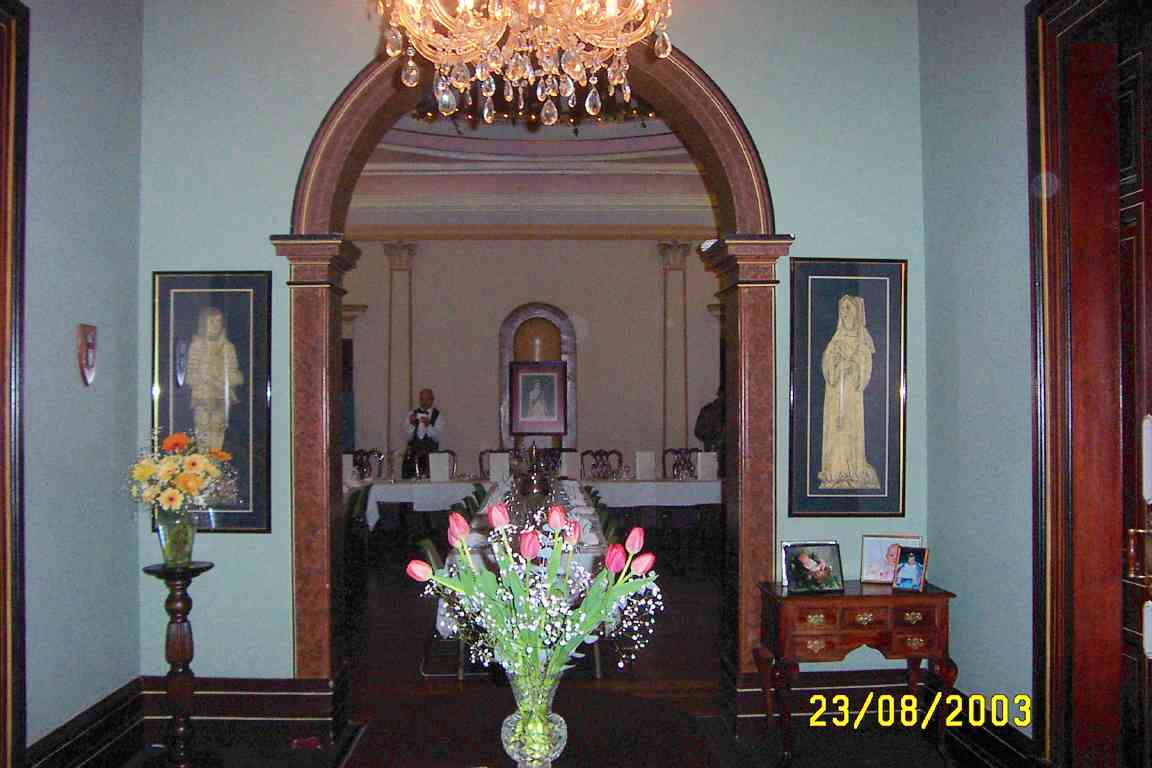
Front
Hall
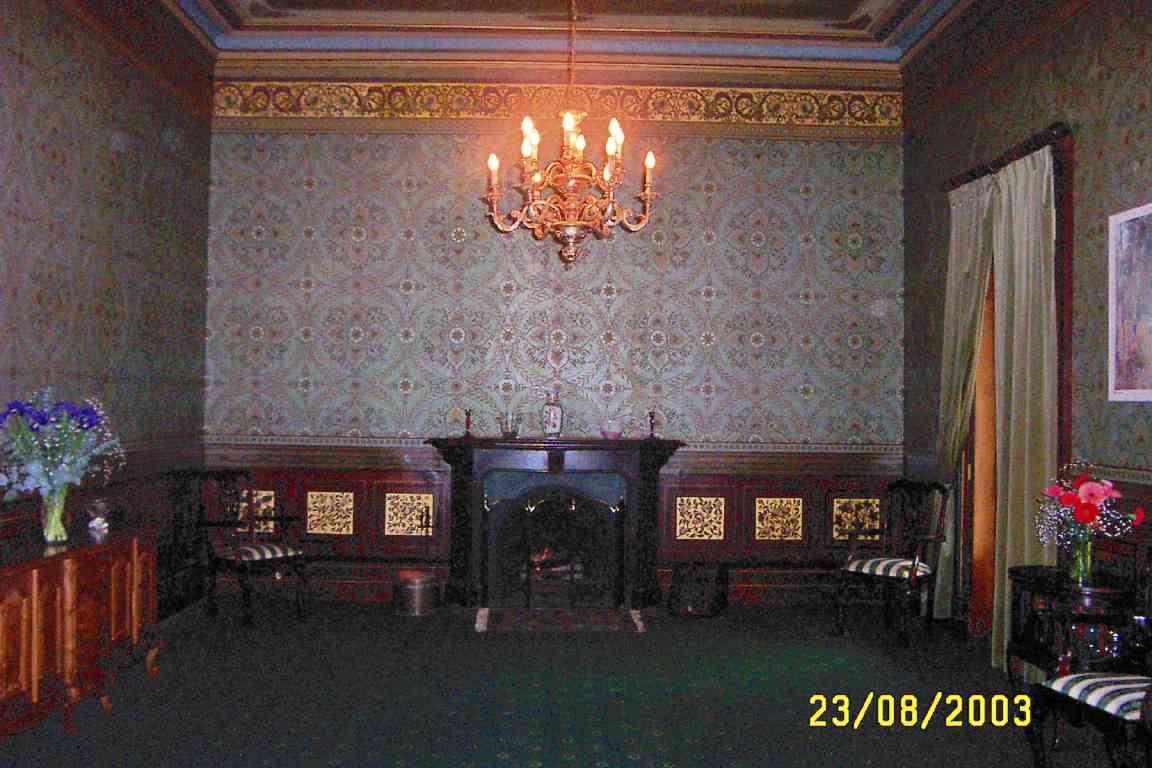
Dining Room
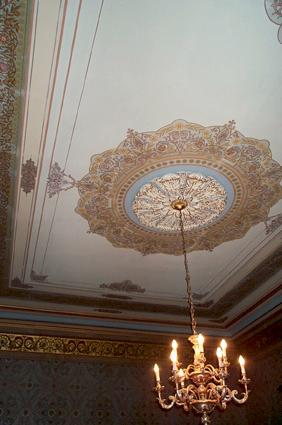
Dining Room Ceiling
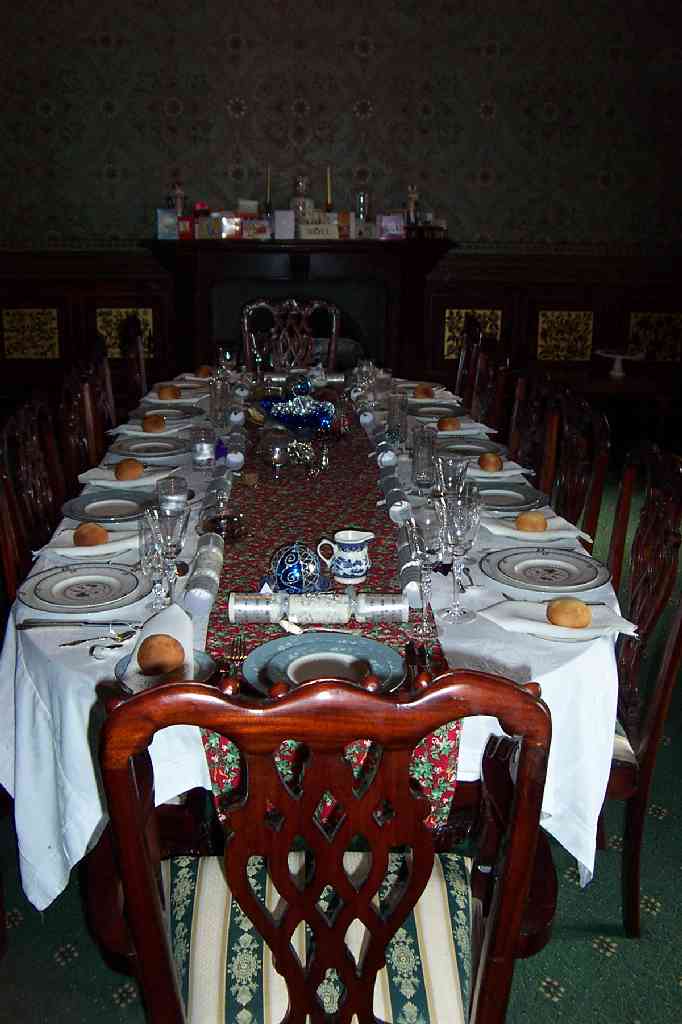
Dining Room Table
Extracts From
Conservation Plan
Entry
The Entry is located immediately inside the front door, and
leads directly
into
the central Ballroom. Double sliding doors in the north and south walls
lead to
the Dining and Drawing Rooms respectively. The doors and skirtings
retain their
original wood-grain finish and gilded linework. The cornice and ceiling
rose
retain coloured decoration, that appears to date from the time of the
1870's.
The walls are painted in a single tone. It is considered
likely that
the
ceiling and walls were decorated in greater detail, similar to the
Dining Room.
The floor is carpeted.
Dining Room
The Dining Room has retained its painted decoration dating
from the
1870's.
The painted decoration in the Dining Room is considered to be of exceptional
quality and is rare, with only several examples by the same artisan in South
Australia. The importance of this internal decoration generally makes an
important contribution to the significance of the House.
It has been suggested that the 1873 painting of Para Para was
the work
of the
Scottish firm Lyon and Cottier, more particularly their employee
Charles
Gow.
Gow is also considered responsible for the painting of Ayers House
in Adelaide.
Although there is no documentary evidence to prove this, there
is a
weight of
circumstantial evidence clearly set out in Taylor's history of Ayers
House. The
work is "world-class", of such high quality that it could only have
been done
by "a firm of well-practised, trained and highly talented decorative
artists."
Several of the motifs used in Ayers House are known to have
been
designed
by
the firm and the similarities between the schemes in Ayers House and
Para Para
- the motifs, colours, line work on the doors and the geometric line
work
elsewhere - suggest they are the work of the same person.
The firm established business in Sydney in 1873 with Lyon and
two assistants,
Charles Gow and Andrew Wells, coming from Scotland. It is likely that
Gow
completed the work at Para Para whilst in Adelaide and before he began
work on
Ayers House. It is also possible that Gow was responsible for painting
Sir
Edwin Smith's house, The Acacias, now Loreto Convent. These three
interiors
rate very highly among the few existing painted decorative interiors
of grand
South Australian buildings, public or private.